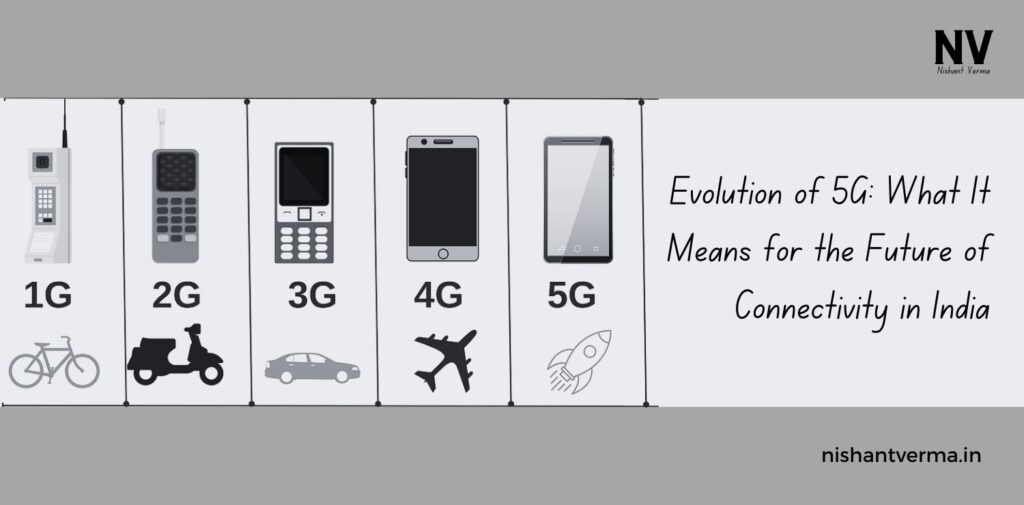Can you imagine downloading a full HD movie in just a few seconds?
What if your mobile could connect to the internet instantly, with no buffering or lag?
How will 5G change the way we live, work, and interact with technology in India?
In a world that is increasingly connected, the speed, reliability, and capacity of networks are more important than ever. Enter 5G – the fifth generation of mobile connectivity, which promises to revolutionize the way we experience the internet. But how exactly is 5G different from the earlier generations? And more importantly, what does it mean for the future of connectivity in India? Let’s dive deep into the evolution of 5G, the benefits it brings, and how it will reshape our lives.
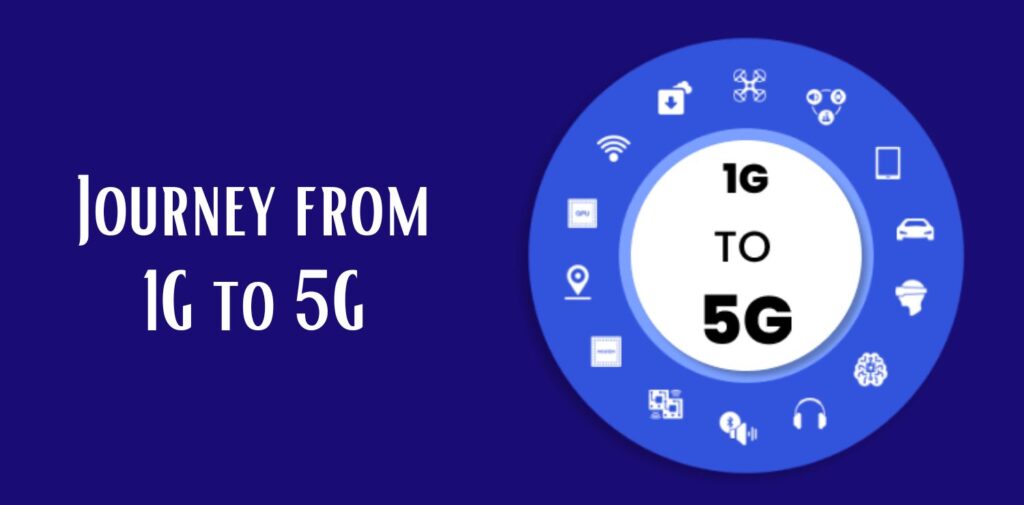
Journey from 1G to 5G: How We Got Here
Before we talk about 5G, it’s essential to understand where we started. Mobile networks have evolved significantly since the first mobile network was introduced in 1981.
- 1G (1980s): The first mobile network, which allowed for voice calls. It was slow, analog, and had limited coverage.
- 2G (1990s): This generation brought digital signals, allowing for not just voice calls but also text messages (SMS). It offered a much clearer voice experience.
- 3G (2000s): With the arrival of 3G, mobile data took off, enabling internet browsing, emails, and early video calls. Speeds were faster but still slow compared to today’s standards.
- 4G (2010s): 4G revolutionized mobile internet by providing high-speed data services, enabling streaming, faster downloads, and better connectivity for smartphones, tablets, and other devices. We saw the rise of services like Netflix, YouTube, and online gaming.
What Is 5G?
Now, we have 5G, the fifth generation of mobile networks, which promises to take things to a whole new level. But what exactly does 5G offer? To put it simply, 5G offers three major improvements over 4G:
- Blazing-Fast Speeds: 5G will offer speeds up to 100 times faster than 4G. This means you can download large files, stream high-quality videos, and use data-heavy apps without any delay.
- Lower Latency: Latency is the time it takes for data to travel from one point to another. 5G will reduce this delay to just one millisecond, compared to 30-50 milliseconds with 4G. This is crucial for applications like gaming, autonomous vehicles, and real-time remote surgeries.
- Massive Connectivity: 5G can support up to 1 million devices per square kilometer. This will be vital for smart cities, the Internet of Things (IoT), and other technologies that require a large number of connected devices.
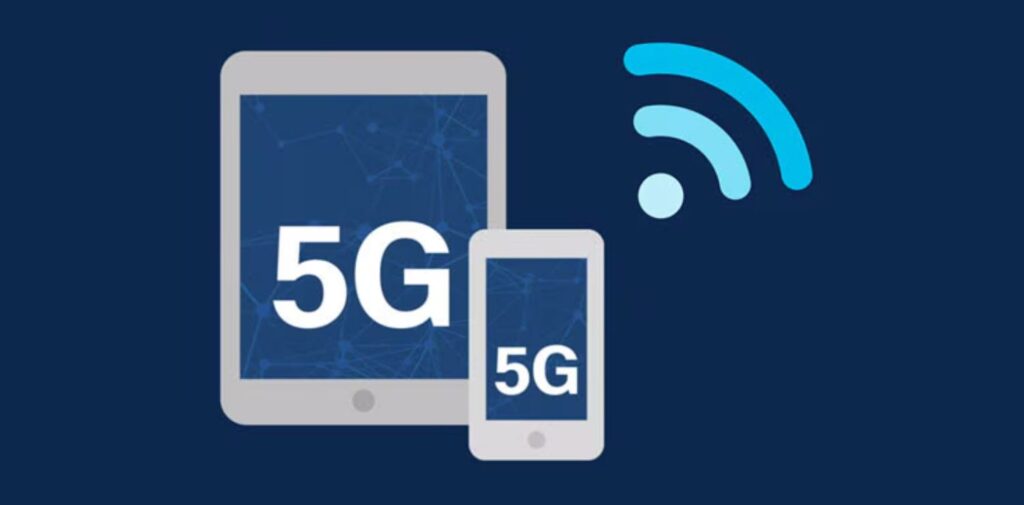
How 5G Will Impact India’s Future Connectivity
India, with its huge population and growing digital economy, is set to benefit immensely from 5G. Here’s how:
Faster Internet for All
In India, slow internet speeds and poor connectivity are still common issues, especially in rural and remote areas. With 5G, these problems could be a thing of the past. Whether you’re in a small village in Rajasthan or a bustling city like Bengaluru, 5G will provide fast and reliable internet everywhere.
For example, imagine a farmer in rural India using 5G to access weather forecasts, market prices, and online agricultural tutorials on his smartphone in real time. The high-speed internet will give him access to vital information that could improve crop yields and reduce losses.
Transforming Healthcare
One of the most exciting possibilities of 5G is in the healthcare sector. In India, where access to quality healthcare is often limited, 5G can enable telemedicine and remote surgeries. Doctors in urban areas can perform surgery on a patient in a remote village, thanks to 5G’s low latency and high-speed data transfer.
For instance, a patient in a village in Uttar Pradesh could connect with a specialist in Mumbai through 5G-powered telemedicine. The doctor could diagnose the condition and even guide local healthcare workers through the treatment process in real-time.
Smart Cities and IoT
India’s cities are rapidly growing, and with 5G, we can expect the development of smart cities that are more efficient and sustainable. 5G will support the massive number of connected devices needed for smart homes, smart traffic systems, and smart utilities.
In smart cities, traffic lights can adjust in real-time based on traffic conditions, reducing congestion and pollution. Streetlights can automatically turn on or off based on the time of day or weather conditions. All these advancements are possible thanks to the power of 5G’s connectivity.
Empowering Education and Remote Learning
Education in India has seen a significant transformation with the rise of online learning platforms. However, one major hurdle is slow internet speeds. With 5G, students across the country will be able to participate in high-quality, interactive online courses with seamless video and audio, without worrying about buffering or interruptions.
In remote areas where access to quality education is limited, 5G can bring virtual classrooms to every student’s phone or tablet. For example, a student in a remote village in Odisha could take a live science class with an expert teacher in Delhi, thanks to the power of 5G.
Boosting Digital Economy and E-Commerce
India’s digital economy is growing rapidly, with e-commerce, digital payments, and online services gaining popularity. With the arrival of 5G, the e-commerce experience will become smoother and more efficient. Product videos, virtual try-ons, and augmented reality (AR) shopping experiences will be more realistic and engaging.
For instance, imagine browsing for a new pair of shoes online. With 5G, you can use AR to virtually “try on” the shoes in real-time, seeing how they look on your feet without having to visit a store. This enhanced experience will make online shopping faster, easier, and more enjoyable for millions of Indians.
Transforming Industries and Innovation
The potential of 5G goes beyond consumer applications. In industries like manufacturing, agriculture, and logistics, 5G will enable the use of robots, automation, and real-time data analysis. For example, in a factory, 5G-powered robots can work alongside human workers, making production lines faster and more efficient.
In agriculture, 5G can enable precision farming, where sensors on crops and machinery will provide real-time data on soil health, weather conditions, and crop growth, helping farmers make better decisions.
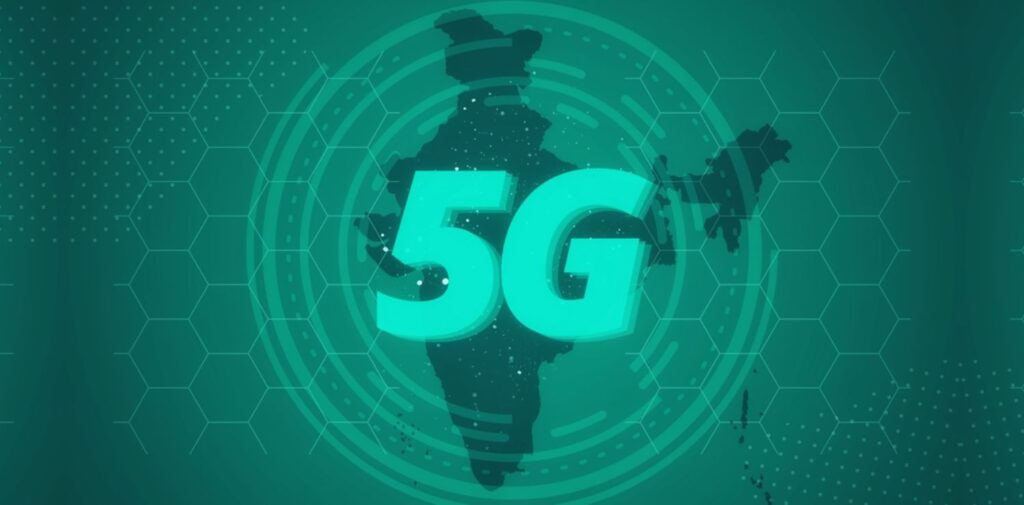
Challenges in Rolling Out 5G in India
While the benefits of 5G are clear, there are several challenges in rolling out 5G in India:
- Infrastructure Costs: 5G requires a significant upgrade to existing mobile infrastructure, including building new towers and laying fiber-optic cables. This will be an expensive and time-consuming process.
- Spectrum Availability: The Indian government must auction off the necessary spectrum for 5G networks, and there have been delays in the process. Without the proper spectrum, 5G services cannot be launched.
- Affordability: While 5G promises faster speeds and better services, there is a concern that the high cost of 5G-enabled smartphones and plans may be out of reach for many Indians. However, as the technology matures, prices are expected to drop.
- Digital Divide: While cities may get access to 5G first, rural areas may still face challenges. Bridging this gap will be critical to ensuring equitable access to 5G services.
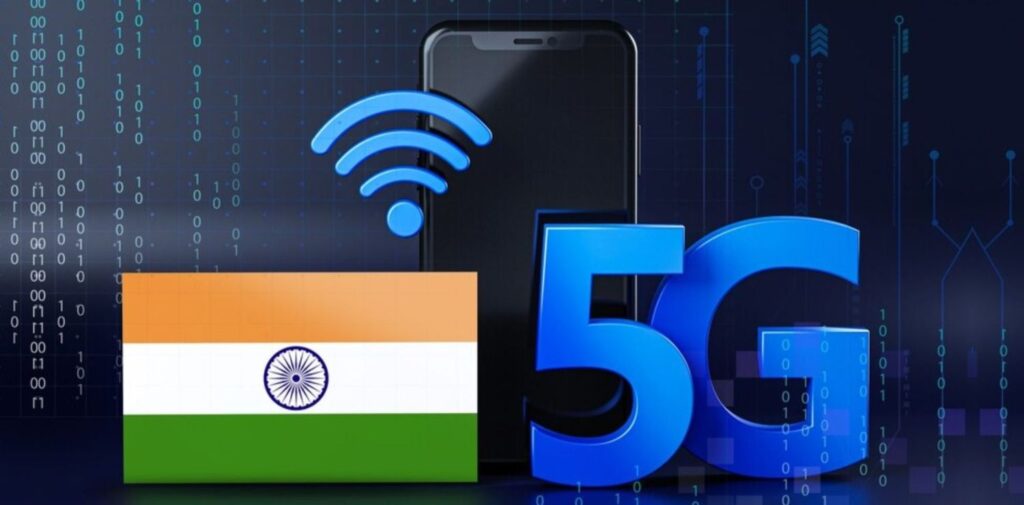
Road Ahead: India’s 5G Future
As 5G slowly rolls out across India, it is clear that it will transform the way we live, work, and interact with technology. From faster internet speeds to smarter cities and better healthcare, the possibilities are endless.
However, the full potential of 5G can only be realized if the government, telecom companies, and other stakeholders work together to overcome the challenges and ensure that this technology reaches every corner of the country. For now, the journey has begun, and the future looks bright for India’s digital revolution powered by 5G.
Conclusion: Evolution of 5G
The evolution of 5G promises a new era of connectivity in India. With faster speeds, lower latency, and greater capacity, 5G will bring a wide range of benefits, from better education and healthcare to smarter cities and industries. While challenges remain, the future of 5G in India is undoubtedly exciting. As we embrace this next generation of connectivity, the possibilities are endless, and India is poised to lead the way in shaping the future of the digital world.

